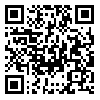Volume 13, Issue 3 (May & Jun 2022)
BCN 2022, 13(3): 373-384 |
Back to browse issues page
Download citation:
BibTeX | RIS | EndNote | Medlars | ProCite | Reference Manager | RefWorks
Send citation to:



BibTeX | RIS | EndNote | Medlars | ProCite | Reference Manager | RefWorks
Send citation to:
Eghtesad M, Elahdadi Salmani M, Lashkarbolouki T, Goudarzi I. Lateral Hypothalamus Corticotropin-releasing Hormone Receptor-1 Inhibition and Modulating Stress-induced Anxiety Behavior. BCN 2022; 13 (3) :373-384
URL: http://bcn.iums.ac.ir/article-1-1780-en.html
URL: http://bcn.iums.ac.ir/article-1-1780-en.html
1- Department of Animal Biology, School of Biology, Damghan University, Damghan, Iran.
Abstract:
Introduction: Stress is a reaction to unwanted events disturbing body homeostasis and its pathways and target areas. Stress affects the brain through the lateral hypothalamic area (LHA), the orexinergic system that mediates the effect of corticotropin-releasing hormone (CRH) through CRH Receptor Type 1 (CRHr1). Therefore, this study explores the outcome of stress exposure on anxiety development and the involvement of the LHA through LHA-CRHr1.
Methods: Male Wistar rats (220-250 g) implanted with a cannula on either side of the LHA received acute or chronic stress. Subsequently, exploratory behavior was examined using the Open Field (OF), and anxiety was tested by Elevated Plus Maze (EPM). Before sacrifice, the cerebrospinal fluid (CSF) and the blood were sampled. Nissl stain was performed on fixed brain tissues.
Results: Acute stress reduced exploration in of and increased anxiety in EPM. LHA-CRHr1 inhibition reversed the variables to increase the exploration and decrease anxiety. In contrast, chronic stress did not show any effect on anxiety-related behaviors. Chronic stress decreased the cell population in the LHA, which was prevented by the CRHr1 inhibition. However, the CRHr1 inhibition could not reverse the chronic stress-induced increase in the CSF orexin level. Furthermore, plasma corticosterone levels increased through acute or chronic stress, impeded by the inhibition of CRHr1.
Conclusion: Our results recognize LHA-CRHr1 as a capable candidate that modulates acute stress-induced anxiety development and chronic stress-induced changes in the cellular population of the region.
Methods: Male Wistar rats (220-250 g) implanted with a cannula on either side of the LHA received acute or chronic stress. Subsequently, exploratory behavior was examined using the Open Field (OF), and anxiety was tested by Elevated Plus Maze (EPM). Before sacrifice, the cerebrospinal fluid (CSF) and the blood were sampled. Nissl stain was performed on fixed brain tissues.
Results: Acute stress reduced exploration in of and increased anxiety in EPM. LHA-CRHr1 inhibition reversed the variables to increase the exploration and decrease anxiety. In contrast, chronic stress did not show any effect on anxiety-related behaviors. Chronic stress decreased the cell population in the LHA, which was prevented by the CRHr1 inhibition. However, the CRHr1 inhibition could not reverse the chronic stress-induced increase in the CSF orexin level. Furthermore, plasma corticosterone levels increased through acute or chronic stress, impeded by the inhibition of CRHr1.
Conclusion: Our results recognize LHA-CRHr1 as a capable candidate that modulates acute stress-induced anxiety development and chronic stress-induced changes in the cellular population of the region.
Keywords: Lateral hypothalamic area, Orexin, Stress, Anxiety, Corticotropin releasing hormone receptor type-1 (CRHr1)
Type of Study: Original |
Subject:
Behavioral Neuroscience
Received: 2020/05/5 | Accepted: 2020/10/12 | Published: 2022/05/1
Received: 2020/05/5 | Accepted: 2020/10/12 | Published: 2022/05/1
Send email to the article author
| Rights and permissions | |
 |
This work is licensed under a Creative Commons Attribution-NonCommercial 4.0 International License. |








